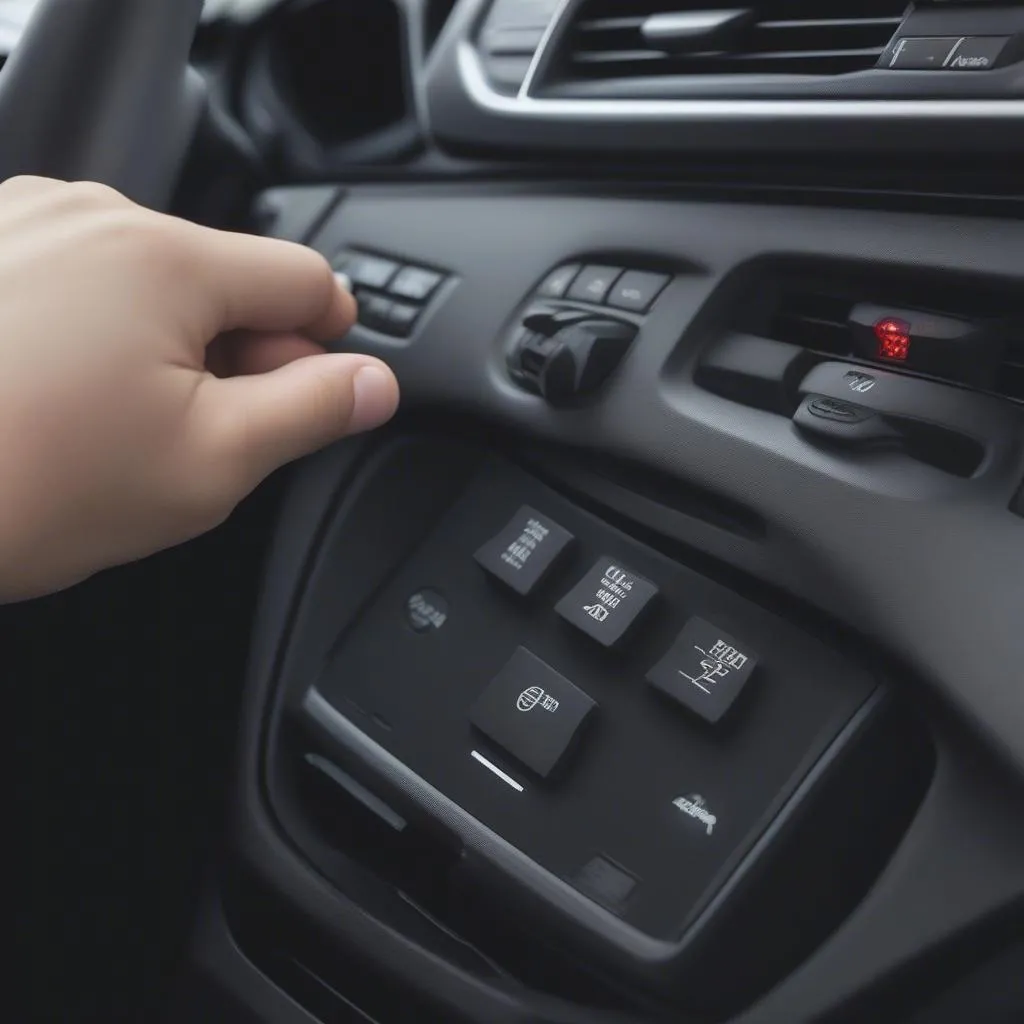Imagine you’re driving your Hyundai Elantra down a sunny California highway, enjoying the open road and the warm breeze. Suddenly, the check engine light flashes on, and you’re left wondering what’s wrong. You’re not alone. Many Hyundai Elantra owners encounter this situation at some point. Thankfully, finding the OBD port on your car is the first step towards diagnosing and fixing the issue.
Why is the OBD Port Important?
The OBD (On-Board Diagnostics) port is a vital component of your Hyundai Elantra’s electrical system. It acts as a communication gateway between your car’s computer and diagnostic tools, allowing technicians and even DIY enthusiasts to gain valuable insights into your vehicle’s health.
From a Mechanic’s Perspective
For mechanics like myself, the OBD port is an essential tool for diagnosis. It helps me pinpoint the source of a problem, whether it’s a faulty sensor, a misfire, or an electrical issue. Using a diagnostic scanner, I can retrieve specific error codes, analyze data, and even perform live readings to understand what’s going on under the hood.
From a Technical Perspective
The OBD port allows for communication using a standardized protocol, making it compatible with a wide range of diagnostic tools. It’s like a universal language that enables different devices to speak to your car’s computer.
From an Economic Perspective
The OBD port is a cost-effective solution for maintaining your Hyundai Elantra. Diagnosing issues early can prevent more serious problems down the road, potentially saving you money on expensive repairs.
Where is the OBD Port Located in a Hyundai Elantra?
The OBD port in most Hyundai Elantras, including the 2016 model, is located under the dashboard, on the driver’s side, near the steering column. It’s usually a 16-pin connector, resembling a rectangular box.
 Hyundai Elantra OBD Port Location
Hyundai Elantra OBD Port Location
Finding the OBD Port: A Step-by-Step Guide
- Look for the driver’s side footwell: This is the area where the driver’s feet rest.
- Examine the area around the steering column: The OBD port is often near the fuse box or the pedal assembly.
- Look for a rectangular, 16-pin connector: This is the tell-tale sign of the OBD port.
Note: If you have difficulty finding the OBD port, consult your owner’s manual for specific instructions for your Hyundai Elantra model year.
Frequently Asked Questions
Here are some frequently asked questions about the Hyundai Elantra OBD port:
“What is the Hyundai Elantra OBD port used for?”
The OBD port allows mechanics to connect diagnostic tools to your car’s computer system. These tools can read and clear error codes, monitor sensor readings, and even perform live data analysis.
“What is a diagnostic scanner and how do I use it?”
A diagnostic scanner is a tool that allows you to communicate with your car’s computer. It’s a bit like a stethoscope for your car, allowing you to listen to what’s happening under the hood.
“Can I use my smartphone to read OBD codes on my Hyundai Elantra?”
Yes, you can use smartphone apps with an OBD adapter to read diagnostic codes. However, these apps are limited in functionality compared to professional diagnostic scanners.
“Can I fix my car myself using an OBD reader?”
While some basic issues can be fixed with a simple OBD reader and some research, more complex problems often require the expertise of a qualified mechanic.
“What happens if I don’t find the OBD port on my Hyundai Elantra?”
If you can’t locate the OBD port, it’s best to consult a mechanic or a certified technician. They have the expertise and tools to diagnose and fix any underlying issues.
Beyond the OBD Port
Beyond the basic OBD functionality, the Hyundai Elantra has a number of advanced features that can enhance your driving experience. These features include:
- Hyundai Blue Link: This telematics system allows you to connect your car to your smartphone and access features like remote start, remote door lock/unlock, and vehicle diagnostics.
- Advanced driver-assistance systems (ADAS): The Hyundai Elantra offers a range of ADAS features, including lane departure warning, blind spot monitoring, and adaptive cruise control.
 Hyundai Elantra Advanced Features
Hyundai Elantra Advanced Features
Keep in Mind:
Remember, while the OBD port is a valuable tool for diagnosing car problems, it’s not a replacement for proper maintenance and repairs. It’s important to follow your car’s recommended service schedule and address any issues promptly.
Need Help?
If you’re experiencing issues with your Hyundai Elantra, our team of experienced mechanics can help. We provide comprehensive diagnostics and repairs for all Hyundai models. Don’t hesitate to contact us via WhatsApp: +84767531508.
Ready to Explore More?
Do you have more questions about your Hyundai Elantra, or perhaps you’re interested in learning about the latest diagnostic tools and software? Be sure to explore our website for more information, including articles on:
- 2016 Hyundai Elantra OBD port location
- 2016 Hyundai Elantra OBD port location
- 2012 Hyundai Elantra OBD fuse location
- Hyundai Elantra 2008 OBD
- Hyundai OBD software
Don’t hesitate to share your thoughts and experiences in the comments below. We’d love to hear from you!